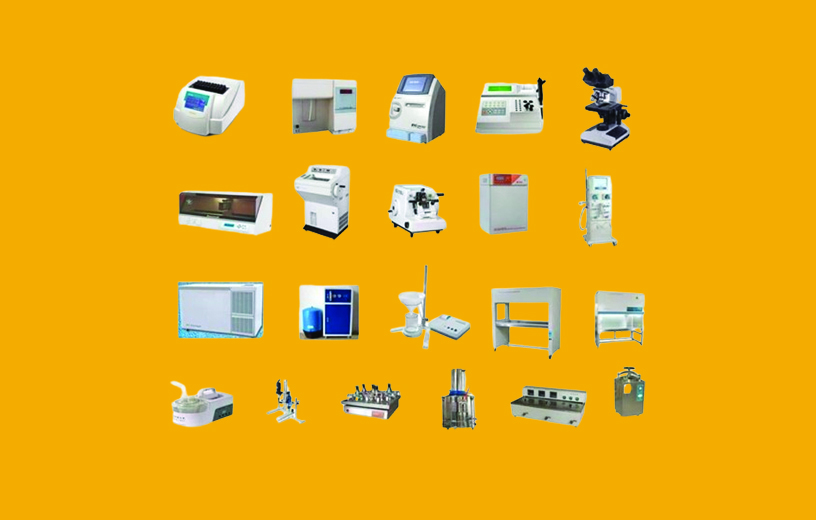A List of Common Scientific Meters in Bangladesh, 2024
In Bangladesh, scientific meters and instruments are used across various fields including research, education, industry, and healthcare. Here’s a list of some common scientific meters and instruments used in Bangladesh:
- Digital Multimeter: Used for measuring various electrical quantities such as voltage, current, and resistance.
- Spectrophotometer: Instrument used to measure the intensity of light at different wavelengths, often used in chemistry and biology for analyzing substances.
- pH Meter: Measures the acidity or alkalinity of a solution, important in fields such as chemistry, biology, and environmental science.
- Digital Thermometer: Measures temperature electronically, widely used in laboratories, industrial processes, and healthcare.
- Anemometer: Measures wind speed and direction, used in meteorology, environmental monitoring, and HVAC systems.
- Hygrometer: Measures humidity levels in the air, important for various applications including agriculture, weather forecasting, and industrial processes.
- Lux Meter: Measures the intensity of light, used in photography, cinematography, and environmental monitoring.
- Tachometer: Measures the rotational speed of a shaft or disk, commonly used in engineering, automotive, and manufacturing industries.
- Gas Chromatograph (GC): Analytical instrument used for separating and analyzing volatile compounds, often used in chemistry and environmental science.
- Liquid Chromatograph (LC): Separates and analyzes components of a liquid mixture, widely used in pharmaceuticals, food analysis, and environmental monitoring.
- Atomic Absorption Spectrophotometer (AAS): Analytical technique used for determining the concentration of elements in a sample, important in chemistry, environmental science, and materials science.
- Mass Spectrometer (MS): Analyzes the mass and composition of molecules in a sample, used in various fields including chemistry, biochemistry, and forensic science.
- Oscilloscope: Displays and analyzes the waveform of electronic signals, used in electronics, telecommunications, and engineering.
- Power Meter: Measures electrical power consumption, important in energy monitoring and management.
- Blood Glucose Meter: Measures the concentration of glucose in blood, commonly used by people with diabetes for monitoring blood sugar levels.
- Digital Weighing Scale: Measures the mass or weight of objects with high precision, used in laboratories, industries, and commercial applications.
- Dissolved Oxygen Meter: Measures the amount of oxygen dissolved in water, important for assessing water quality in environmental monitoring, aquaculture, and wastewater treatment.
- Salinity Meter: Measures the concentration of salt in water, vital for studying marine ecosystems, agriculture (especially in coastal regions), and aquaculture.
- Soil Moisture Meter: Determines the moisture content in the soil, crucial for agriculture, environmental science, and geotechnical engineering.
- Particle Counter: Counts and sizes particles suspended in air or liquids, used in cleanrooms, environmental monitoring, and indoor air quality assessments.
- UV-Visible Spectrophotometer: Measures the absorbance of ultraviolet (UV) and visible light by a sample, widely used in chemistry, biochemistry, and pharmaceutical analysis.
- Gas Detector: Detects the presence of specific gases in the environment, crucial for workplace safety, industrial processes, and environmental monitoring.
- Sound Level Meter: Measures the intensity of sound in decibels (dB), used in environmental noise monitoring, occupational safety, and acoustics research.
- Fluorescence Microscope: Optical microscope equipped with fluorescence illumination and filters, used in biology, medicine, and materials science for observing fluorescently labeled samples.
- X-ray Diffractometer (XRD): Analyzes the crystalline structure of materials by measuring the diffraction pattern of X-rays, important in materials science, geology, and pharmaceuticals.
- Nuclear Magnetic Resonance Spectrometer (NMR): Analyzes the molecular structure of compounds by measuring the interaction of atomic nuclei with magnetic fields, used in chemistry, biochemistry, and medical diagnostics.
- Scanning Electron Microscope (SEM): Electron microscope that produces high-resolution images of the surface morphology of samples, widely used in materials science, nanotechnology, and biology.
- High-Performance Liquid Chromatograph (HPLC): Separates and analyzes components of a liquid mixture with high resolution, important in pharmaceuticals, food analysis, and environmental monitoring.
- Gas Chromatograph-Mass Spectrometer (GC-MS): Combines gas chromatography with mass spectrometry for compound identification and quantification, used in analytical chemistry, environmental science, and forensics.
- Electrocardiogram (ECG) Machine: Records the electrical activity of the heart over time, essential in cardiology for diagnosing heart conditions and monitoring cardiac health.
- Vibration Meter: Measures vibration levels in machinery and structures, important for predictive maintenance, structural health monitoring, and occupational safety.
- Moisture Analyzer: Determines the moisture content of solid, liquid, or gaseous samples, used in food processing, pharmaceuticals, and environmental analysis.
- Flame Photometer: Measures the concentration of specific chemical elements in a sample by detecting the emission of characteristic wavelengths of light when the sample is vaporized in a flame, used in clinical chemistry, soil analysis, and environmental monitoring.
- Electron Microprobe Analyzer (EMP): Analyzes the chemical composition of materials by bombarding them with a focused electron beam and detecting X-rays emitted from the sample, important in geology, mineralogy, and materials science.
- Total Organic Carbon Analyzer (TOC Analyzer): Measures the concentration of organic carbon in water samples, used in environmental monitoring, wastewater treatment, and pharmaceutical manufacturing.
Conclusion: The adoption of advanced scientific meters and instruments is driving innovation across various sectors in Bangladesh in 2024. From enhancing healthcare delivery to optimizing industrial processes and mitigating environmental risks, these instruments play a pivotal role in shaping the nation’s development trajectory. As Bangladesh continues to prioritize scientific research and technological advancement, investments in cutting-edge meters will remain instrumental in achieving sustainable growth and prosperity.



